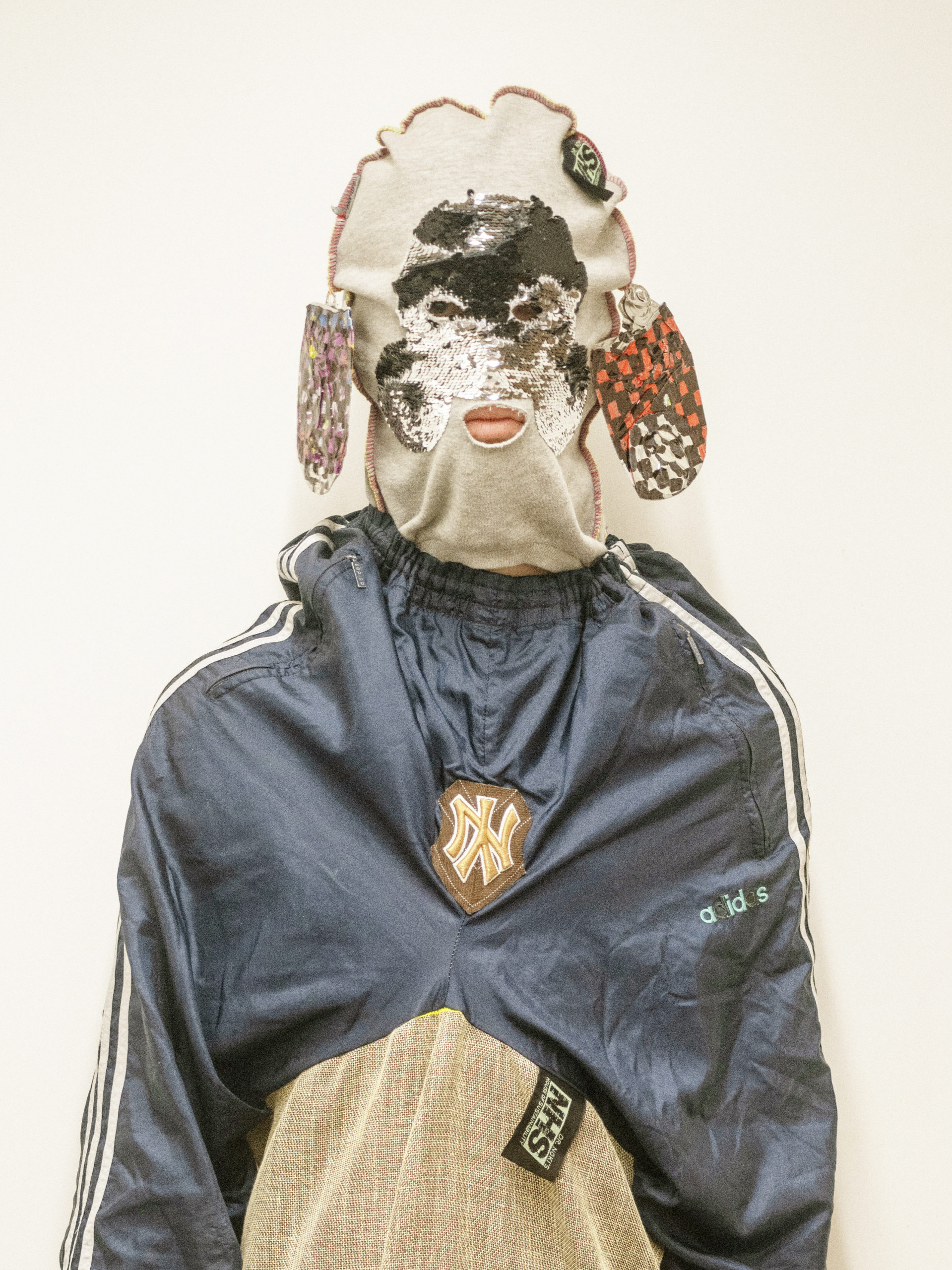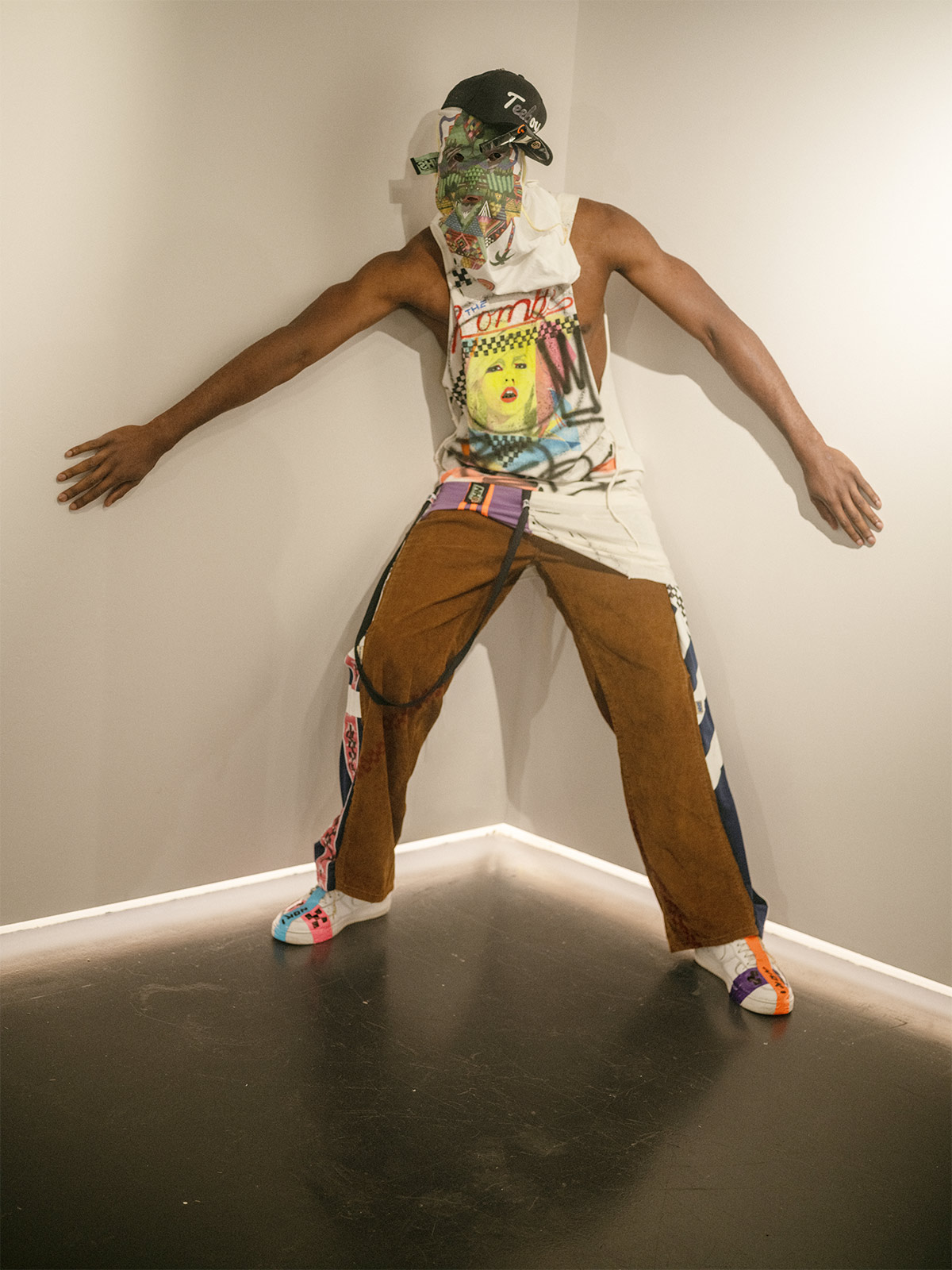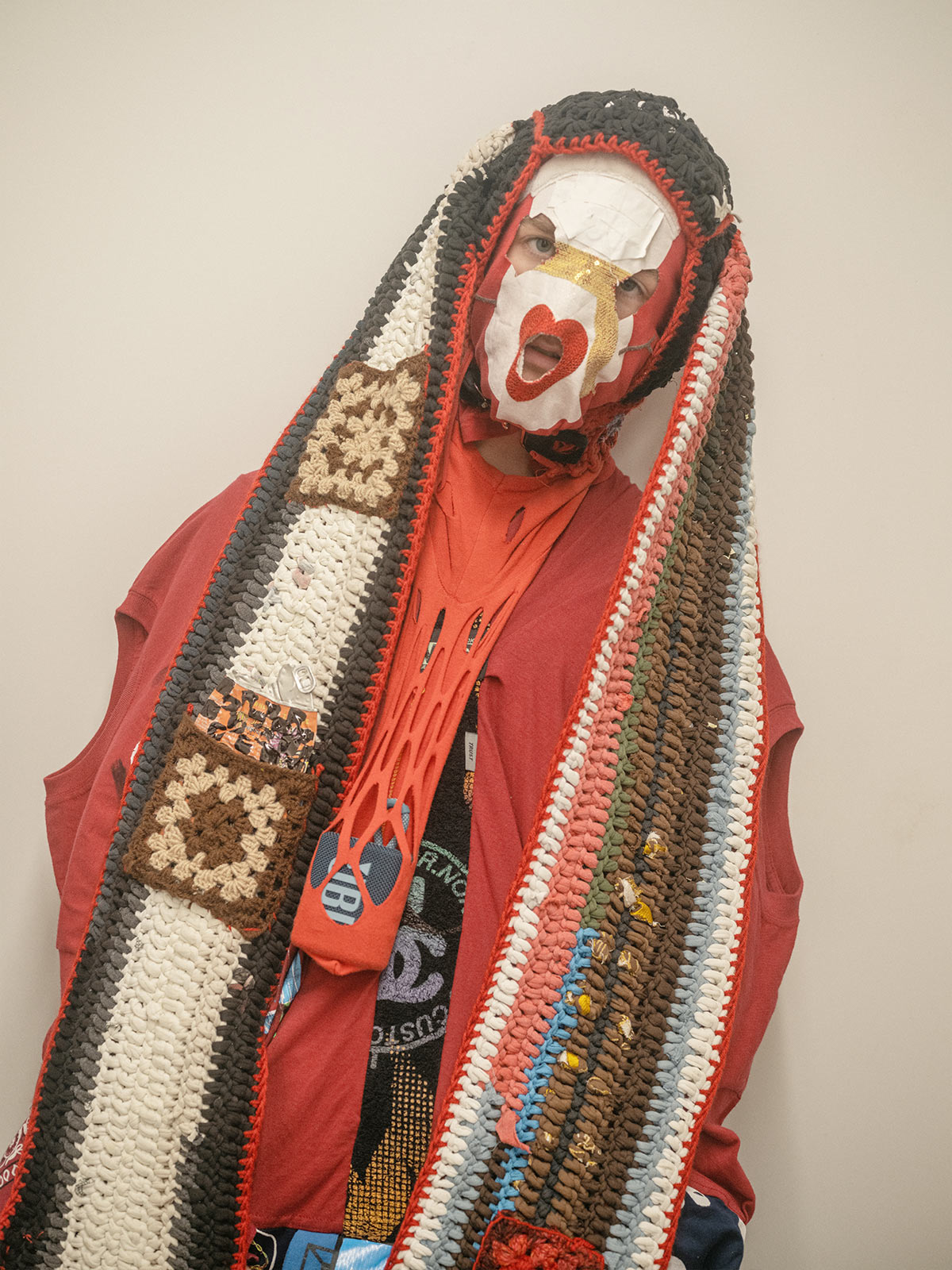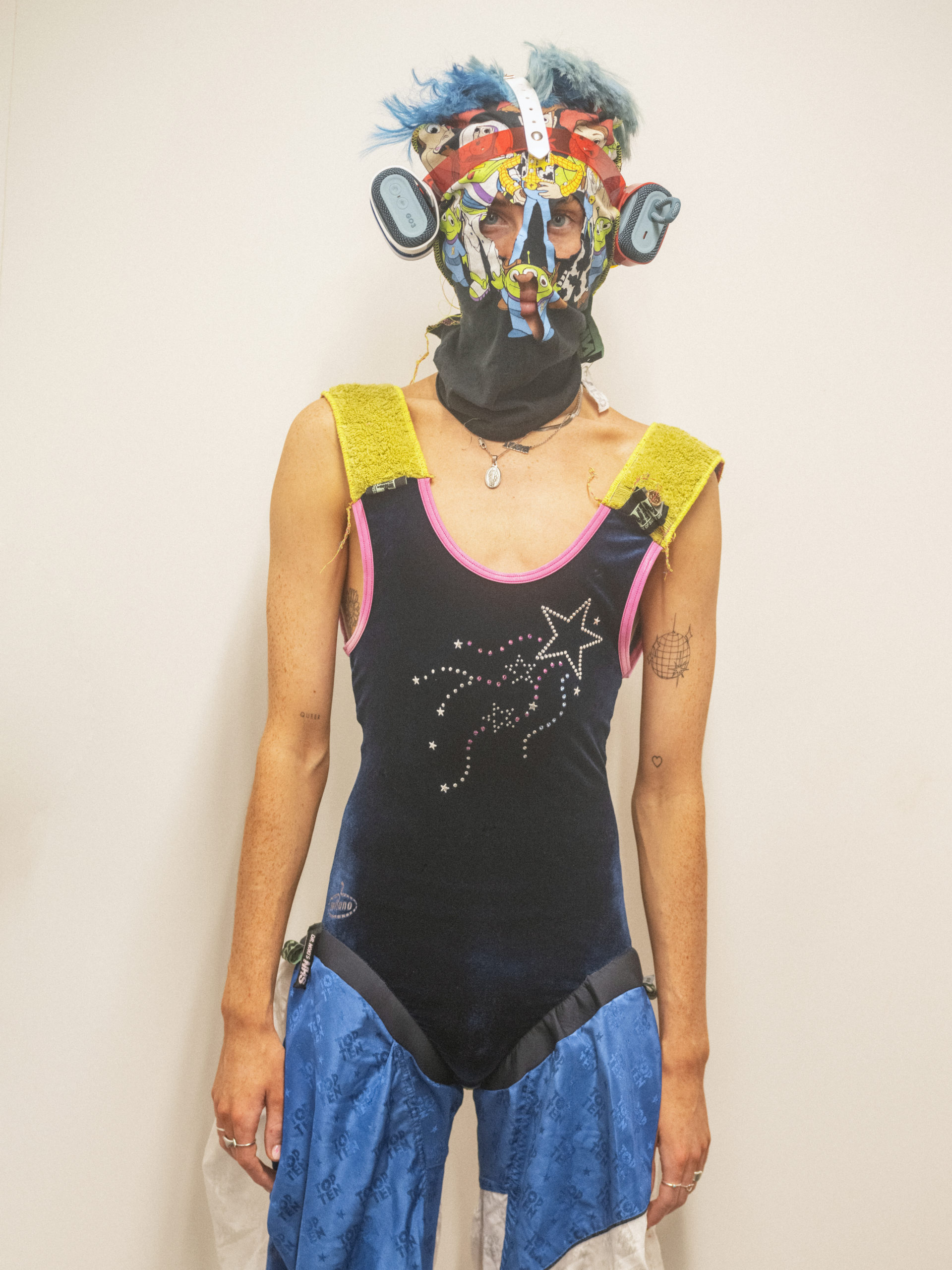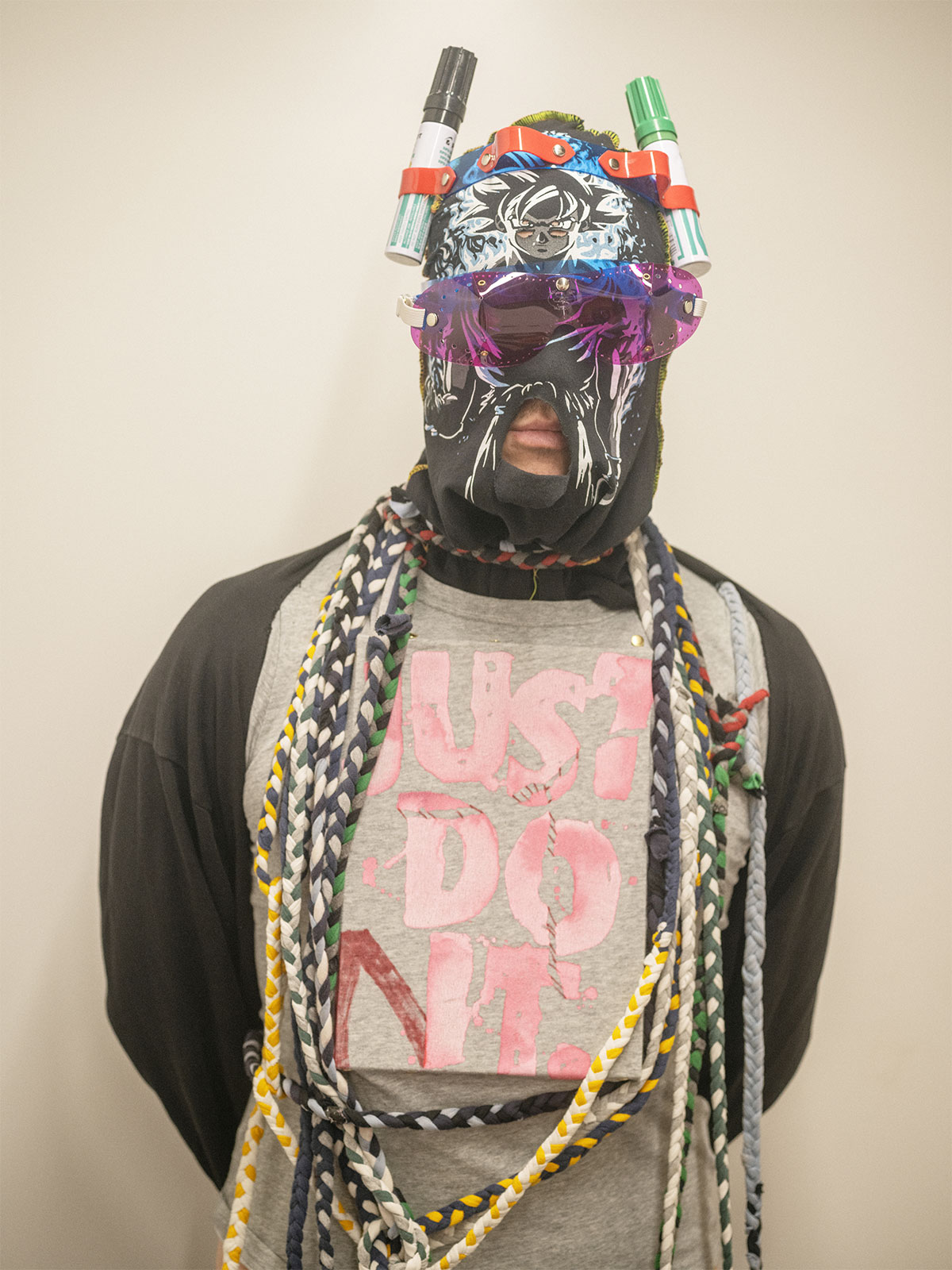Following his London Fashion Week presentation, the masked designer met with Document to debrief and reminisce—and to imagine the future of his legendary brand
Dr. Noki, otherwise known as JJ Hudson, created a brand that never gets old. That’s likely because NOKI was founded on the tenets of youth: anti-institutional rebelliousness, the endless search for style that sets one apart, a near-religious love for partying. Hudson founded his label, after all, from within the late-’90s Shoreditch rave scene—in refining his going-out uniform, he took to upcycling thrifted garments, eventually coming out with something resembling the daring, irreverent mashups he shows today at London Fashion Week.
Despite and because of Hudson’s elusiveness—he’s always wearing a mask that obscures his features, cut with the same sure-handed, haphazard technique as the rest of his garments—the designer and artist has become a sort of cult figure in the London fashion scene. His latest show was a testament to that: NOKI’s audience resembled concert-goers more than the typical Fashion Week crowd. Multiple soundtracks played from handheld speakers, t-shirts were launched into the crowd, and the models provided their own visual noise: Each look was less predictable than the last, incorporating elements ranging from tulle skirts, to fencing gear, to Disney merch, to duct tape, to fur boots.
Just following the iconic production, Hudson met with Document to debrief and reminisce—and to imagine the future of the NOKI brand, “with big open arms and a happy heart for the future of fashion education.”
Morgan Becker: What was the energy like at today’s show?
JJ Hudson: It was like that weekend anticipation of a mind-bender rave.
Morgan: What sort of intention did you place behind the presentation?
JJ: This presentation was to platform the NOKI NESTT—an educational endeavor to start my own school and studio. The idea is that students will learn how to custom build these silhouettes on their own, to build [their own] interpretations.
Morgan: NOKI has been described as “anti-fashion.” How do you see it fitting into institutional events like London Fashion Week? What is its relationship to the more mainstream labels it’s showing alongside?
JJ: It’s about presenting a new way to interpret fashion design: as the custom building of already created garments into fresh, sustainable styles and silhouettes.
Morgan: Tell me about the process of constructing a NOKI garment—from sourcing its materials, to the end product. Do you have an initial vision in mind, or does it come together piece by piece?
JJ: At first, back in the ’90s, I had to build new ideas I’d not seen before by experimenting with my own rave uniform—customizing it with an inner instinct, I suppose. The classic NOKI Zine is two t-shirts overlocked together, to make what I saw as a Shoreditch textile zine, instead of traditional paper one. I’d graffiti and subvert each t-shirt as its pages, and enjoy seeing my mates wear them out in the rave scene—like a raving double-page spread. That felt like ’90s, fresh zone vibes. Each custom build comes from a vintage find. Then my mind goes into 3D build mode. I know when I first scissor-cut into them, it’s going to work. It’s blind faith that I enjoy executing.
Morgan: How should a NOKI garment feel on the wearer?
JJ: It should feel like a Freedom Uniform.
Morgan: You’ve historically taken iconography from streetwear brands, symbols of pop culture—repurposing these disparate elements and, in the process, making them your own. What are your thoughts on ownership in the arts industries?
JJ: I had a silly idea in the ’90s. I broke rules. I made an impact by not being scared to have a healthy disregard for them. My [rule-breaking] has become mainstream, which I’m pleased with as an artist. It makes my avant-garde colleagues more relevant in 2022. That’s a great youth evolution.
Morgan: NOKI was born from the legacy of London’s ’90 DIY rave scene. How does that legacy persist today in the collections you’re putting out? How have your designs evolved since the brand’s founding in ’96?
JJ: To be truthful, I feel nothing has really changed about how I create a NOKI collage piece. The custom build has gotten more professional in its approach, but what has definitely changed is Mother Earth’s ability to provide that first-life garment. I just have a solution on what a second-, third-, fourth-life customization can be like.
Morgan: Are you still involved in underground party scenes in London? How do you stay connected to that initial source of radical inspiration?
JJ: I have my moments, yes. But it’s not my mash-up motivation like it used to be. I know my limits. You have to. It’s called ‘toxic rave hindsight.’ This show had handheld JBL speakers playing my muses’ own tastes in music. I wanted to celebrate that unique rave liberation. Like having your own, custom-built beat.
Morgan: What’s been an unexpected creative reference this season?
JJ: Crisp packets and road-crushed tin cans, and my mate Jiv’s plastic off-cuts. Our work just pops together.
Morgan: How are you celebrating this new collection?
JJ: With big open arms and a happy heart for the future of fashion education.




